This article was co-authored by Meera Subash, MD and by wikiHow staff writer, Janice Tieperman. Dr. Meera Subash is a board certified Rheumatologist and Internist. She specializes in scaling up healthcare technology solutions for rheumatic and chronic disease management. Dr. Subash holds a BA in Human Biology from Stanford University and a Doctor of Medicine (MD) from Texas Tech University Health Sciences Center. She completed a residency in Internal Medicine at The University of California, San Diego, where she served as Chief Resident in Quality and Patient Safety at The VA San Diego Healthcare System. Dr. Subash also completed a fellowship in Rheumatology at The University of California, San Francisco - School of Medicine. She is currently pursuing another fellowship in Clinical Informatics at The University of California, San Francisco - School of Medicine.
There are 13 references cited in this article, which can be found at the bottom of the page.
wikiHow marks an article as reader-approved once it receives enough positive feedback. In this case, 100% of readers who voted found the article helpful, earning it our reader-approved status.
This article has been viewed 145,429 times.
Meniscus tears are pretty common, but that doesn’t make them any less painful. “Meniscus” is a fancy term for the cartilage cushioning your knees; during an intense sport or activity, this cartilage can tear, leading to stiffness, pain, and other unpleasant symptoms.[1] Don’t try to grin and bear this injury on your own; instead, visit a doctor first to get a thorough diagnosis of your injury. Don’t worry. We’re here to help walk you through all your treatment options, so you can get back on your feet as soon as possible.
Steps
What at-home remedies can I try?
-
1Follow the RICE method. “RICE” is an acronym for Rest, Ice, Compression, and Elevation, which are the four main things you need to recover safely and comfortably at home.[3] After your injury, the RICE method helps reduce any swelling and discomfort while encouraging flexibility and recovery in the process.[4] Here’s what you have to do:
- Rest: Avoid the sport or activity that caused your tear in the first place, and use crutches as needed to get around.
- Ice: Wrap a cold pack in a towel or rag and ice your injured knee for 20 minutes at a time, multiple times throughout the day. For your own safety, never ice your knee directly.
- Compression: Wrap an elastic compression bandage around your injured knee. Keep the bandage snug, but not too tight—if your knee feels tingly or numb, rewrap the bandage a bit looser.[5]
- Elevation: When you can, prop your injured leg up so it’s above your heart.[6]
-
2Take painkillers if your injury isn’t severe. If your torn meniscus doesn’t cause your knee to lock in place, you can take over-the-counter painkillers, like ibuprofen or acetaminophen, to address the swelling and pain.[7] Check-in with your doctor if your knee still hurts after 6 weeks; at this point, surgery is your next best option.[8]
- Acetaminophen: Adults can take 1 regular-strength acetaminophen pill every 4-6 hours. If 1 pill doesn’t help, try 2 pills next. For your own safety, limit yourself to 12 pills or less each day.[9]
- Ibuprofen: For MOTRIN, take 1-2 pills once every 4-6 hours. With Advil, take 1 pill per every 4 hours or 2 pills per every 6-8 hours. For either medicine, limit yourself to 6 pills per day.
- Naproxen sodium: Take a single pill every 8-12 hours. As a safety precaution, limit yourself to 2 pills each day.
- Aspirin: Take 1-2 pills every 4-6 hours. Cap yourself off at 12 pills each day so you don’t overdose.
What other non-surgical treatments are there?
-
1Talk to your doctor about steroid injections. Corticosteroids may help with the pain, and can help lower swelling. At your appointment, your doctor will inject the steroids directly into your joint, which may get rid of some pain and swelling.[10]
- Researchers are also developing a plasma injection that may help heal meniscus tears.
-
2Visit a physical therapist. Physical therapy is helpful for any kind of meniscus tear, even if you don’t need surgery. A physical therapist might provide manual therapy, suggest icing and compression treatments, use neuromuscular electrical stimulation (NMES), and suggest different exercises to help you recover.[11] Eventually, your therapist will help you figure out when you can go back to an active routine.[12]
How do I know if I have a torn meniscus?
-
1You can’t move your knee as much. After a meniscus tear, you might not be able to straighten or rotate your knee like you normally would. You might also feel like your knee is locked, or that it can’t support your weight.[22]
-
2Your knee is really sore. Pay attention to your regular, daily movements, like climbing out of bed or walking down the street. With a meniscus tear, your knee might feel painful, swollen, and/or extra stiff. You might also feel like your knee is popping.[23]
- The pain may be especially obvious when you rotate or twist your knee.
Expert Q&A
-
QuestionWhat is the fastest way to relieve knee pain?
 Meera Subash, MDDr. Meera Subash is a board certified Rheumatologist and Internist. She specializes in scaling up healthcare technology solutions for rheumatic and chronic disease management. Dr. Subash holds a BA in Human Biology from Stanford University and a Doctor of Medicine (MD) from Texas Tech University Health Sciences Center. She completed a residency in Internal Medicine at The University of California, San Diego, where she served as Chief Resident in Quality and Patient Safety at The VA San Diego Healthcare System. Dr. Subash also completed a fellowship in Rheumatology at The University of California, San Francisco - School of Medicine. She is currently pursuing another fellowship in Clinical Informatics at The University of California, San Francisco - School of Medicine.
Meera Subash, MDDr. Meera Subash is a board certified Rheumatologist and Internist. She specializes in scaling up healthcare technology solutions for rheumatic and chronic disease management. Dr. Subash holds a BA in Human Biology from Stanford University and a Doctor of Medicine (MD) from Texas Tech University Health Sciences Center. She completed a residency in Internal Medicine at The University of California, San Diego, where she served as Chief Resident in Quality and Patient Safety at The VA San Diego Healthcare System. Dr. Subash also completed a fellowship in Rheumatology at The University of California, San Francisco - School of Medicine. She is currently pursuing another fellowship in Clinical Informatics at The University of California, San Francisco - School of Medicine.
Board Certified Rheumatologist It often depends on the underlying cause of the knee pain. I have an appropriately cushioned mattress and working on mobility and stretching can help. If the knee pain is caused by arthritis such as If it's gout or pseudogout, then you probably need to discuss with talk to your rheumatologist about medications or therapy. If the underlying cause it's osteoarthritis, you could discuss physical therapy, oral medications or topical medications that may help.
It often depends on the underlying cause of the knee pain. I have an appropriately cushioned mattress and working on mobility and stretching can help. If the knee pain is caused by arthritis such as If it's gout or pseudogout, then you probably need to discuss with talk to your rheumatologist about medications or therapy. If the underlying cause it's osteoarthritis, you could discuss physical therapy, oral medications or topical medications that may help.
References
- ↑ https://orthop.washington.edu/patient-care/articles/sports/torn-meniscus.html
- ↑ https://orthoinfo.aaos.org/en/diseases--conditions/meniscus-tears/
- ↑ https://orthoinfo.aaos.org/en/diseases--conditions/meniscus-tears/
- ↑ https://www.uofmhealth.org/health-library/tw4354spec
- ↑ https://www.uofmhealth.org/health-library/tw4354spec
- ↑ Meera Subash, MD. Board Certified Rheumatologist. Expert Interview. 5 February 2021.
- ↑ Meera Subash, MD. Board Certified Rheumatologist. Expert Interview. 5 February 2021.
- ↑ https://orthop.washington.edu/patient-care/articles/sports/torn-meniscus.html
- ↑ https://www.getreliefresponsibly.ca/use-pain-medicine-responsibly/adult-dosing-charts
- ↑ https://orthoinfo.aaos.org/en/diseases--conditions/meniscus-tears/
- ↑ Meera Subash, MD. Board Certified Rheumatologist. Expert Interview. 5 February 2021.
- ↑ https://www.choosept.com/symptomsconditionsdetail/physical-therapy-guide-to-meniscal-tear
- ↑ https://www.pennmedicine.org/updates/blogs/musculoskeletal-and-rheumatology/2018/september/meniscus-tears-why-you-should-not-let-them-go-untreated
- ↑ https://my.clevelandclinic.org/health/treatments/21508-meniscus-surgery
- ↑ https://orthop.washington.edu/patient-care/articles/sports/arthroscopic-meniscus-repair.html
- ↑ https://myhealth.alberta.ca/Health/aftercareinformation/pages/conditions.aspx?hwid=zc2311
- ↑ https://www.uofmhealth.org/health-library/te7372
- ↑ https://orthop.washington.edu/patient-care/articles/sports/torn-meniscus.html
- ↑ https://my.clevelandclinic.org/health/diseases/17219-torn-meniscus
- ↑ https://www.choosept.com/symptomsconditionsdetail/physical-therapy-guide-to-meniscal-tear
- ↑ https://my.clevelandclinic.org/health/diseases/17219-torn-meniscus
- ↑ https://www.mayoclinic.org/diseases-conditions/torn-meniscus/symptoms-causes/syc-20354818
- ↑ https://www.mayoclinic.org/diseases-conditions/torn-meniscus/symptoms-causes/syc-20354818
- ↑ https://www.pennmedicine.org/updates/blogs/musculoskeletal-and-rheumatology/2018/september/meniscus-tears-why-you-should-not-let-them-go-untreated
- ↑ https://www.pennmedicine.org/updates/blogs/musculoskeletal-and-rheumatology/2018/september/meniscus-tears-why-you-should-not-let-them-go-untreated
About This Article
To heal a meniscus tear, try to avoid activity for the first 24-72 hours after your injury. During this time, put ice inside a moist towel and put it on your injury for 15-20 minutes every 2-3 hours. The cold will decrease blood flow and swelling while increasing the flow of lymph fluid, which carries healing nutrients to the tissue around the injury. Propping your knee up on pillows will also help reduce swelling. When you do start moving around, wear a splint or bandage to stabilize your knee and prevent movement that can further damage the muscles and tissue. For information on how and when to consider physical therapy or surgery to treat your meniscus tear, read on!
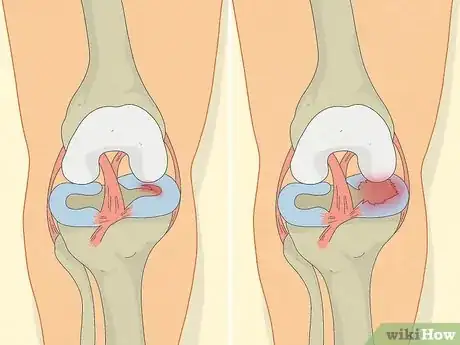
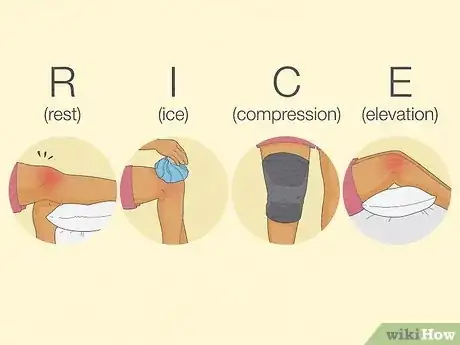

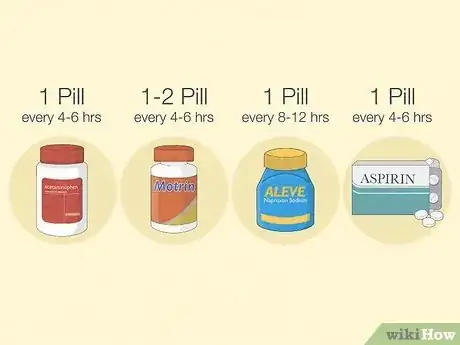
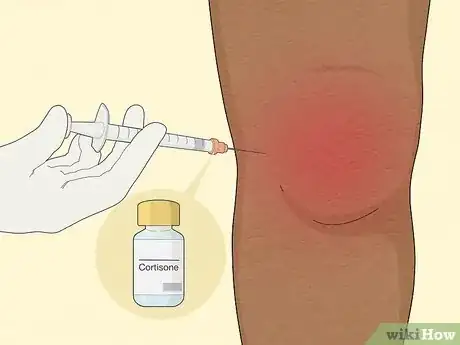
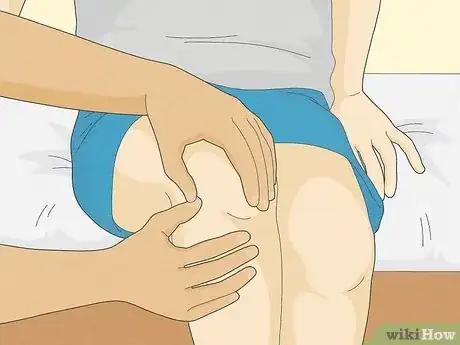
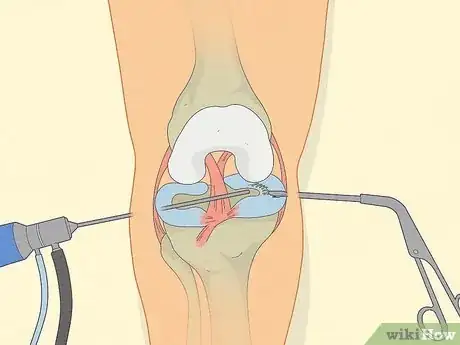
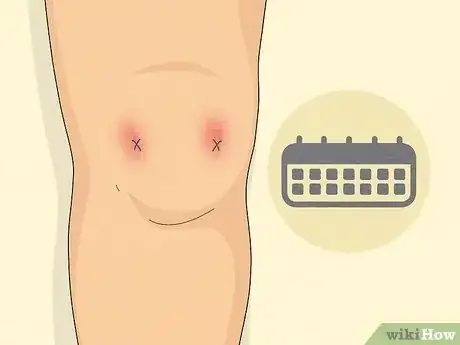
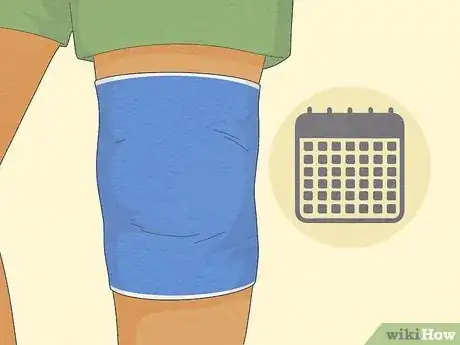
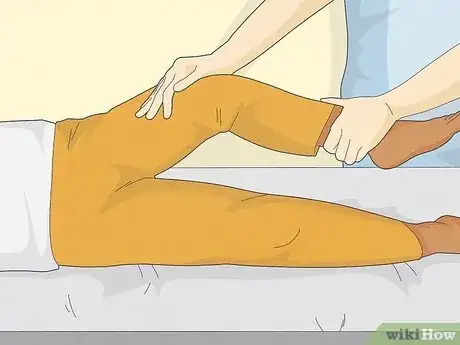
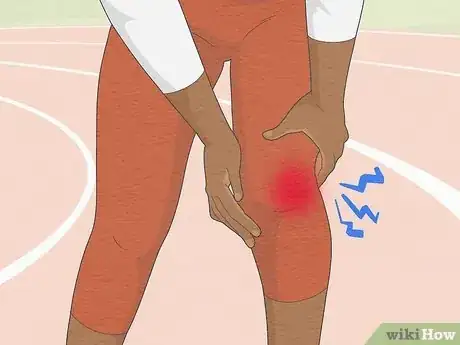
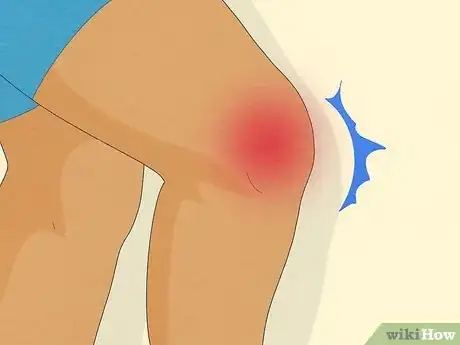
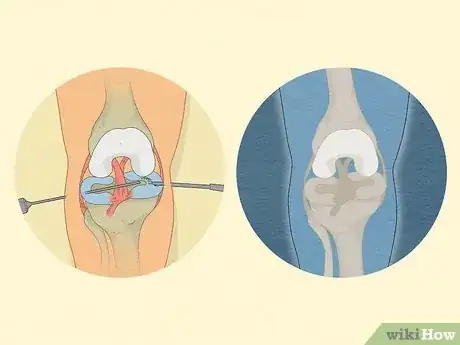
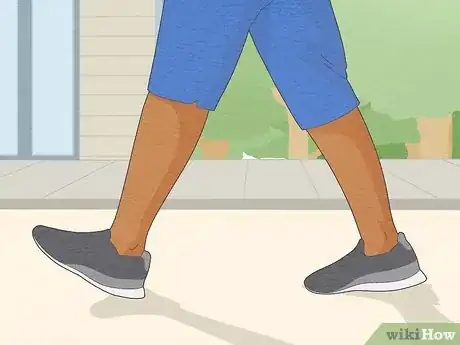
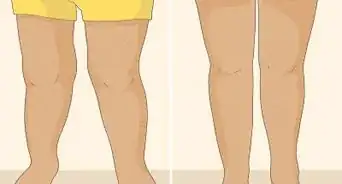
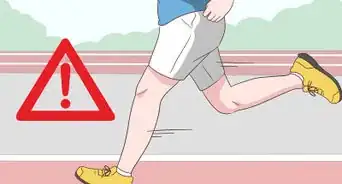
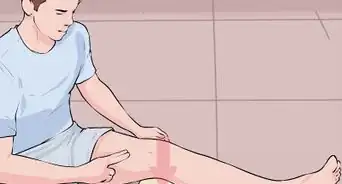
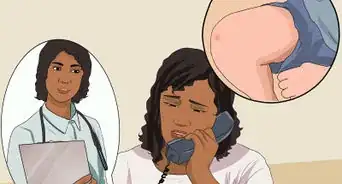
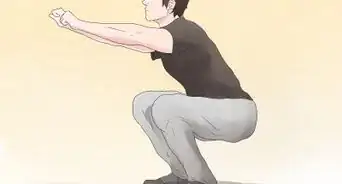
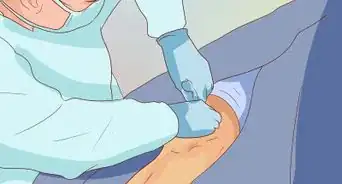
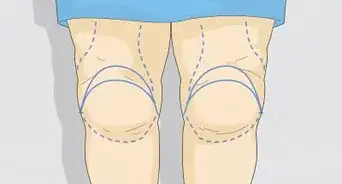
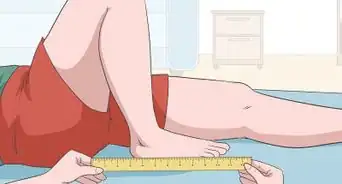
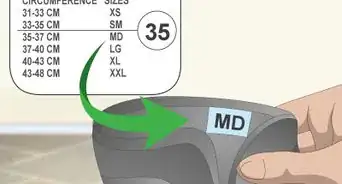
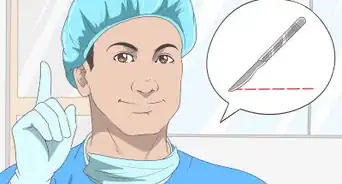
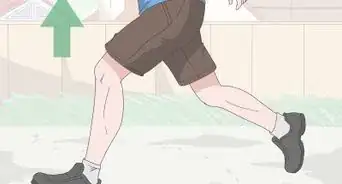
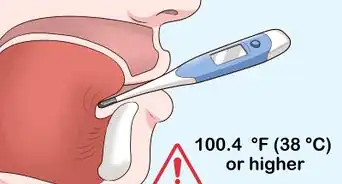










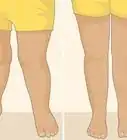
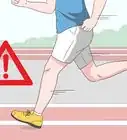
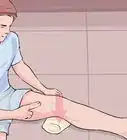




































Medical Disclaimer
The content of this article is not intended to be a substitute for professional medical advice, examination, diagnosis, or treatment. You should always contact your doctor or other qualified healthcare professional before starting, changing, or stopping any kind of health treatment.
Read More...